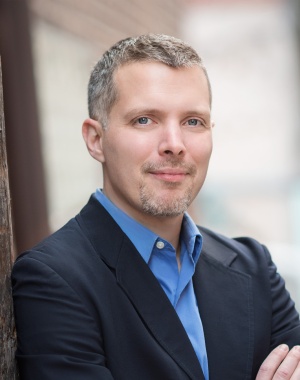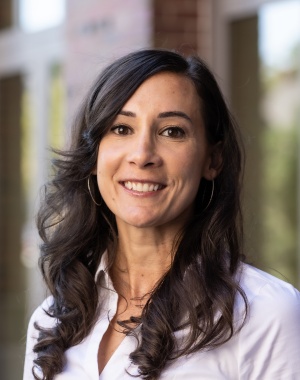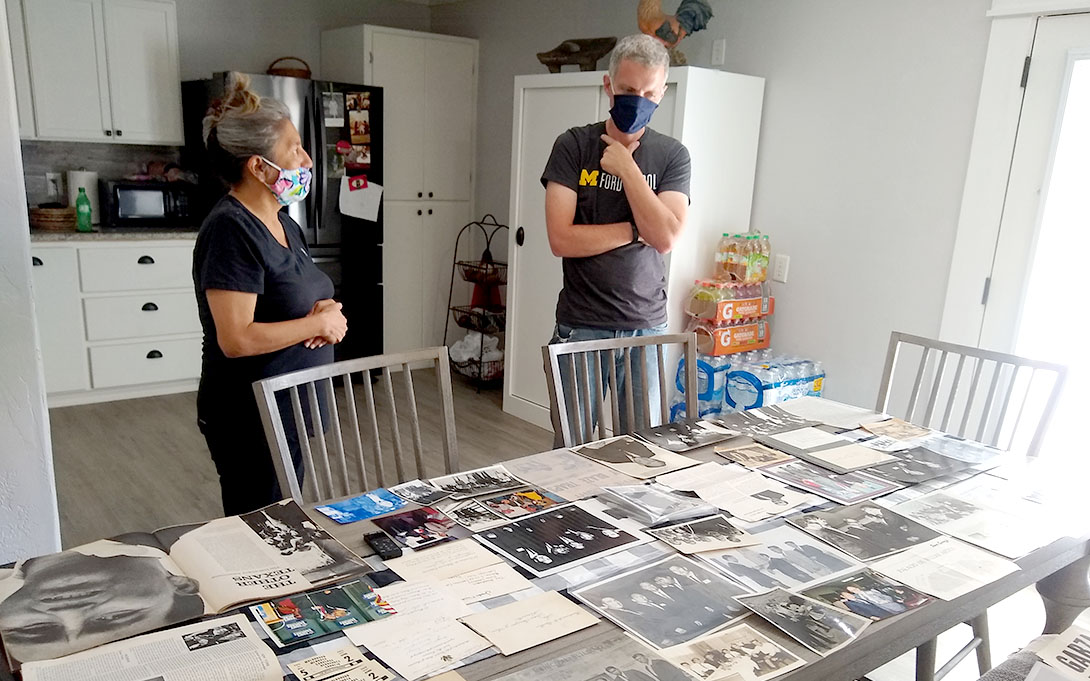
A place-based view of the legacy of poverty in the U.S.
At first glance, there's not much in common among the spinach fields of Crystal City, Texas; the cotton mills near Greenwood, Mississippi; and the historic salt works in Manchester, Kentucky.
But a new analysis of community-level disadvantage reveals these places share similar experiences of poverty. Their histories of exploitation, corruption, and discrimination shape the challenges faced by residents of the southern Texas border, the Cotton Belt, and Appalachia today.
H. Luke Shaefer, the Hermann and Amalie Kohn Professor of Social Justice and Social Policy at the University of Michigan's Gerald R. Ford School of Public Policy, and his collaborators at Princeton University, Kathryn Edin and Timothy Nelson, delve into these common themes in their new book, The Injustice of Place.
"It's a book about poverty, but we talk about social infrastructure, talk about community violence, talk about local government corruption. These are the sort of topics that don't make it into a lot of academic work about poverty in the United States," said Shaefer, the founding director of Poverty Solutions, a university-wide initiative that supports action-based research on the causes and consequences of poverty.
Even for the co-authors—who are among the nation's leading poverty scholars—this research journey brought surprises and a fresh appreciation for the ways history shapes present inequity.
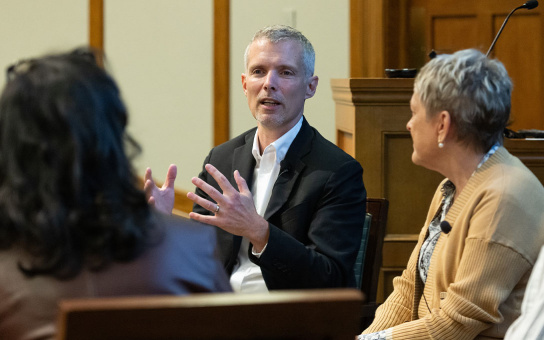
A new measure of deep disadvantage
In response to Edin and Shaefer's 2016 book, $2.00 a Day: Living on Almost Nothing in America, the Robert Wood Johnson Foundation approached the authors about examining deep poverty from a place-based perspective.
Together with Nelson, and many of their student collaborators, they developed the Index of Deep Disadvantage, which uses health indicators, poverty metrics, and social mobility data to provide a holistic measure of community-level disadvantage. The index also allows for direct comparison of counties and cities, which brought a revelation that surprised Shaefer: the majority of the most disadvantaged places in the U.S. are rural, despite the focus on urban poverty in academic research and popular imagination.
To better understand the particular opportunities and challenges in rural areas, members of the research team lived in small towns in Kentucky, Mississippi, South Carolina, and Texas for months at a time and interviewed residents. Edin and Nelson also embarked on a cross-country road trip to visit many of the most disadvantaged places.
Initial findings from the Index of Deep Disadvantage publicized in early 2020 confirmed for Jim King what he'd observed in his work as CEO of Fahe, a network of more than 50 Appalachian nonprofits that touches 86 of the poorest counties in the country. Fahe has engaged with Shaefer's work since $2.00 a Day, and the organization takes a place-based approach to poverty alleviation throughout the country through its Partners for Rural Transformation initiative.
"The [Index of Deep Disadvantage] provides us with the sort of powerful imagery that commands attention from policymakers. It shows how the challenges we face are structural, generational, and not just isolated or individual issues, but very much place-based," King said.
Learning from history
Early findings received attention from rural philanthropic organizations and service providers, Mississippi Congressman Bennie Thompson's office, and journalists. But then the COVID-19 pandemic interrupted the research team's field work. They pivoted to historical documents to learn more about the most disadvantaged places, which was a new research approach for Shaefer.
"For many social scientists, we are aware of history at a high level. We certainly know it plays a role, but then we often proceed with our research … as if our problems appeared out of thin air without a really deep understanding of how history impacts everything we see," Shaefer said. "Most things we see have been shaped by history in ways we don't immediately understand."
The multi-faceted analysis pointed to several mechanisms that drive regional disadvantage: school segregation, lack of social infrastructure, high rates of substance use and violence, dominant and extractive industries, systemic racism embedded in how public aid is distributed, and corruption among local elites.
Rewriting the poverty narrative
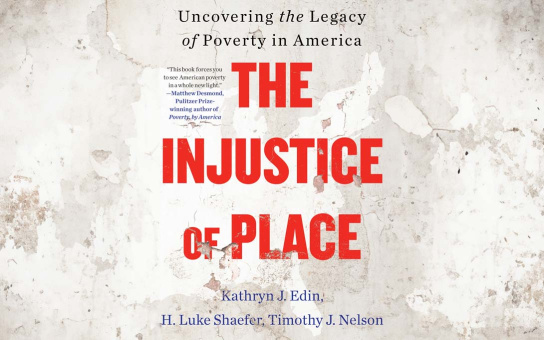
The Injustice of Place shifts attention from people to places to better understand the legacy of poverty in the U.S. In reviewing historical texts, Shaefer also was struck by the deep-rooted view of poverty as the result of individual failings—despite the regional patterns of disadvantage and histories of exploitation that tell a different story.
"I hope it makes us question the narrative," Shaefer said. "How can it be true that our current problems as they relate to poverty are because people are lazy or the government does too much, when many of the same things were being said 100 years ago, and so much of the landscape is different and the people are different?"
People say this "book of surprises" is changing how they think about poverty, Shaefer notes. The Injustice of Place makes several recommendations for alleviating deep disadvantage, drawing lessons from the most advantaged places in the U.S. King said Fahe's goal is for this generation's children to be able to stay in their Appalachian hometowns if they wish, free from a legacy of persistent poverty.
"The valuable insights from The Injustice of Place and the Index of Deep Disadvantage are powerful indicators of what's been missing and wrong," King said. "By naming what is not right, we can shift to working together with the people we serve, as well as join forces with other regions suffering from the same distress, to get the resources we need to overcome these obstacles and create lasting change."
By Lauren Slagter
Meet the Fordies behind The Injustice of Place
Shaefer would like to thank the following people affiliated with the Ford School as Poverty Solutions graduate student research assistants, alumni, faculty, fellows, or staff who contributed to the Index of Deep Disadvantage research and the resulting book, The Injustice of Place:
Meg Duffy
Michael Evangelist
Lanora Johnson
Samiul Jubaed
Elina Morrison
Maricruz Moya
Kate Naranjo
Mara Ostfeld
Karen Otzen Kling
Hannah Pollack
Silvia Robles
Jasmine Simington
New faculty search
The Ford School is actively searching for two senior scholars to join the Kohn Collaborative for Social Policy.
- Carol Kakalec Kohn Professorship: advancing social equity in the U.S. with a focus on the field of health disparities. •
- Harold Kohn Professorship of Economics: supporting applied research in U.S. economic policy that advances social equity and inclusion.
Five endowed professorships are part of the Kohn Collaborative for Social Policy, a hub to catalyze interdisciplinary research and policy impact to promote social equity and inclusion. Find out more at: https://fordschool.umich.edu/kohn-collaborative.
More in State & Hill
Below, find the full, formatted fall 2023 edition of State & Hill. Click here to return to the fall 2023 S&H homepage.

